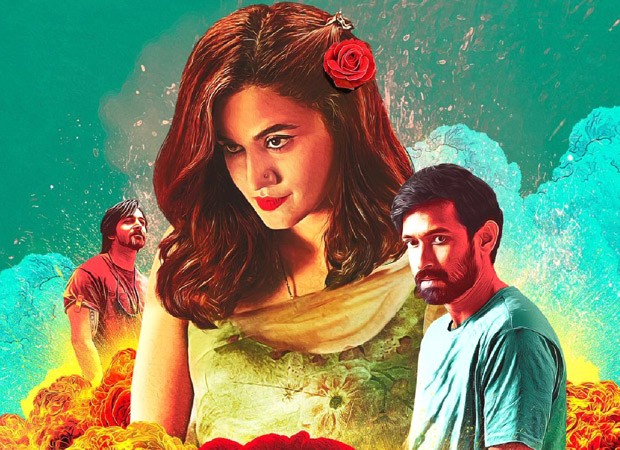
In order to enthral audiences everywhere, the art of storytelling transcends borders and skillfully combines genres and formats. This is what the master storyteller Roald Dahl illustrated in his short story "Lamb to the Slaughter." Haseen Dilruba, a Bollywood thriller from 2023, is one example of how this compelling story has had a lasting impact on literature and other artistic mediums. In this article, we explore the intriguing connection between the two, examining how the film incorporates a distinctly Indian twist while drawing inspiration from Dahl's story.
The classic short story "Lamb to the Slaughter" by Roald Dahl was first released in 1953. The protagonist of the story is Mary Maloney, a seemingly docile pregnant wife whose life takes an abrupt turn when her husband Patrick informs her that he is divorcing her. Mary murders her husband by striking him in the head with a frozen leg of lamb out of rage and desperation. When Mary cooks the murder weapon and serves it to the officers who are conducting the investigation, the plot takes a darkly comic turn. Mary is free to flee with the ideal crime after the unwary officers devour the evidence.
As it questions accepted ideas of innocence and guilt, the story is a masterclass in suspense and subversion. Readers are left shocked and amused by Dahl's deft use of irony and black humour, making "Lamb to the Slaughter" a memorable and thought-provoking work of literature.
The writers and directors of "Haseen Dilruba," directed by Vinil Mathew and written by Kanika Dhillon, were inspired by Roald Dahl's macabre story and adapted it for the Indian setting. Taapsee Pannu plays the mysterious Rani Kashyap in the movie. She is entangled in a web of passion, love, and deceit. Neel Tripathi, the unfortunate victim of her culinary crime, is portrayed by Vikrant Massey.
Although "Lamb to the Slaughter" and "Haseen Dilruba" have similar plotlines, "Haseen Dilruba" has a distinctive Indian twist. Rani, a seductive and mysterious woman, is caught in an acrimonious union with the mild-mannered Neel. Rani is the main suspect after Neel dies unexpectedly. She creates a clever plan to shield herself from the reach of the law.
Rani uses a bone-chilling murder weapon—a frozen mutton leg—in a scene that is reminiscent of Dahl's original story. She lures her husband Neel into a trap of deceit and betrayal in order to kill him using this unusual method. With Neel out of the way, Rani devises a brilliant scheme to get rid of the proof and allay suspicion.
"Haseen Dilruba" changes dramatically from this point on. Rani takes a different culinary route than Mary did in Dahl's story by serving the murder weapon to the police. She gives a pack of stray dogs the frozen mutton leg that is stained with her husband's blood. This turn of events highlights the contrast between the characters' opulent lives and the harsh realities of the streets, adding a layer of grim realism and dark humour to the story.
By taking these steps, Rani demonstrates her ingenuity and resolve to escape punishment for her crime. She gets rid of any visible evidence of her involvement in Neel's murder by giving the evidence to the neighbourhood dogs. A testament to the strength of desperation and the lengths people will go to defend themselves, this chilling act of cunning shows just how far some people will go.
The stories "Lamb to the Slaughter" and "Haseen Dilruba" by Roald Dahl both explore themes of betrayal, deceit, and the unanticipated results of one's actions. In Dahl's tale, Mary's transformation from a supposedly devoted wife to a cunning murderer challenges preconceived notions about what women should and shouldn't do in society. In a similar vein, Rani in "Haseen Dilruba" questions conventional depictions of women in Indian cinema. She is an intriguing and enigmatic protagonist due to her complex personality, which defies simple classification.
The act of using a frozen meat weapon and then getting rid of it creatively highlights the characters' resiliency and desperation in both stories. It also serves as a commentary on the unanticipated responses people have when pushed past their breaking points.
The literary and storytelling worlds have been forever changed by "Lamb to the Slaughter" by Roald Dahl. Its influence can be seen in a variety of artistic and media productions, including the Bollywood suspense film "Haseen Dilruba." The movie draws its ideas from Dahl's well-known story of culinary crime, but adds a distinctive Indian twist to it, resulting in a suspenseful and darkly humorous story that defies expectations.
The frozen mutton leg is used as a metaphor for deceit, resourcefulness, and the lengths people will go to protect themselves in "Haseen Dilruba." It highlights the contrast between the characters' luxurious lifestyles and the gritty realities of the streets while also adding a layer of grim realism to the story.
Both "Lamb to the Slaughter" and "Haseen Dilruba" serve as a timely reminder that storytelling transcends all barriers and that a masterfully crafted story can enthral readers of all ages and cultural backgrounds. Even as we savour the delectably dark twists they serve up, these stories continue to be praised for their capacity to defy expectations, confront stereotypes, and keep us on the edge of our seats.
The Evolution of a Classic Kora Kagaz into Chalte Chalte